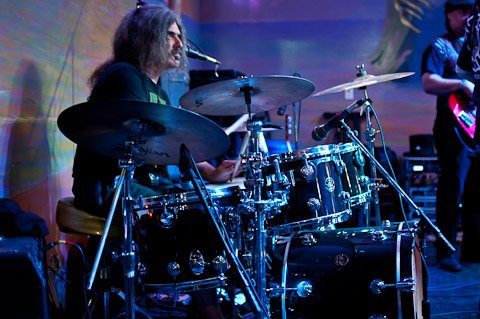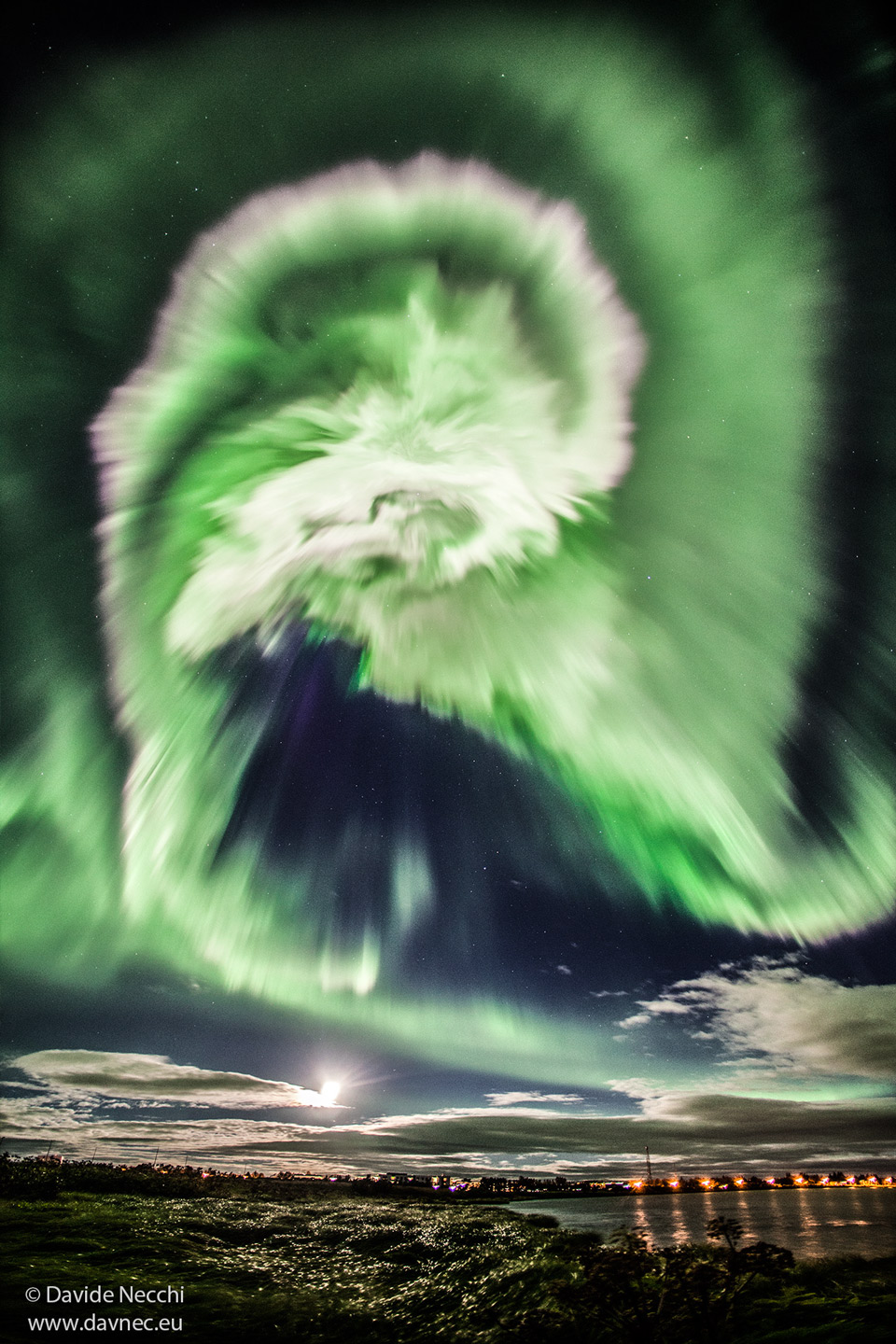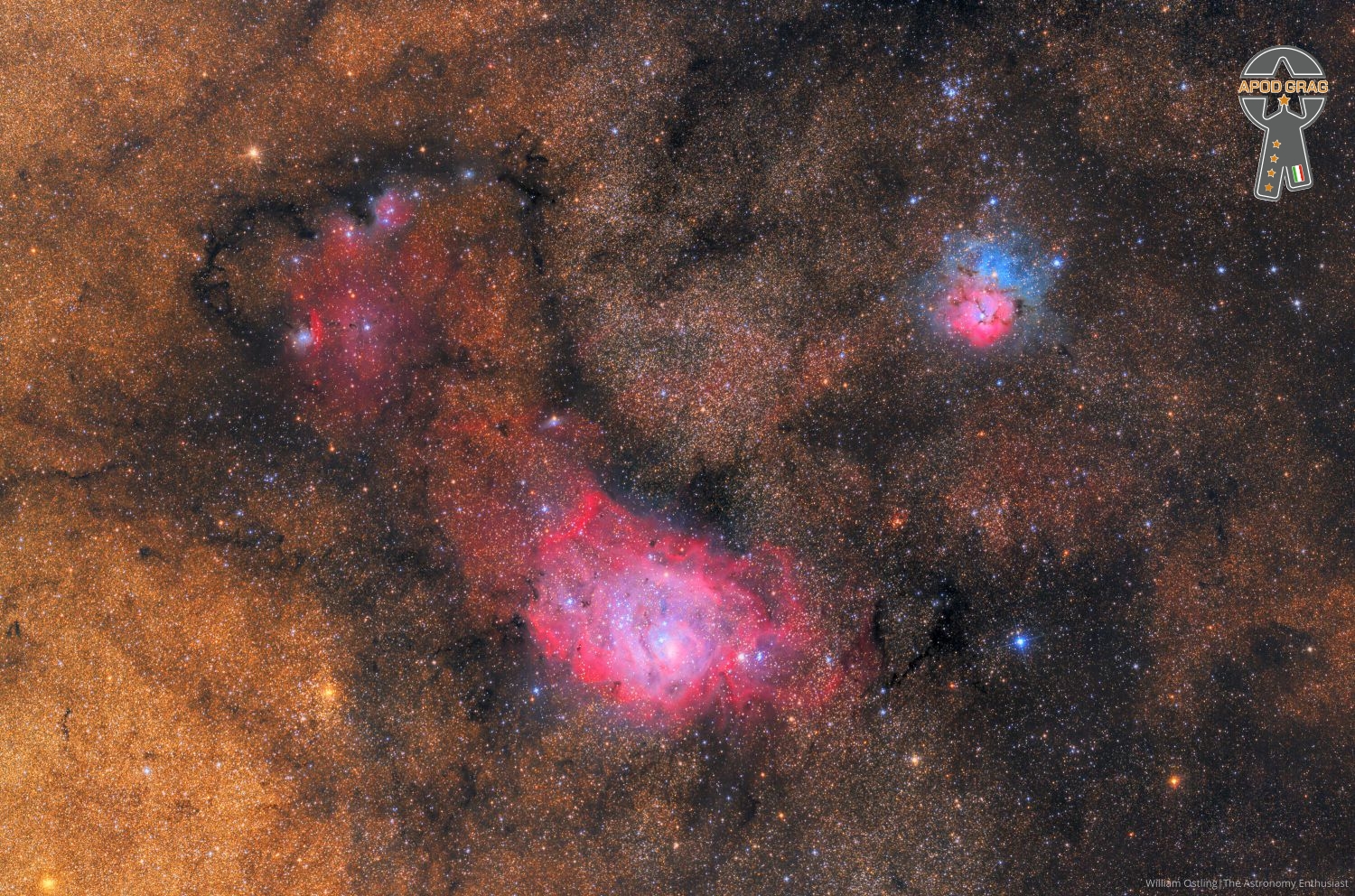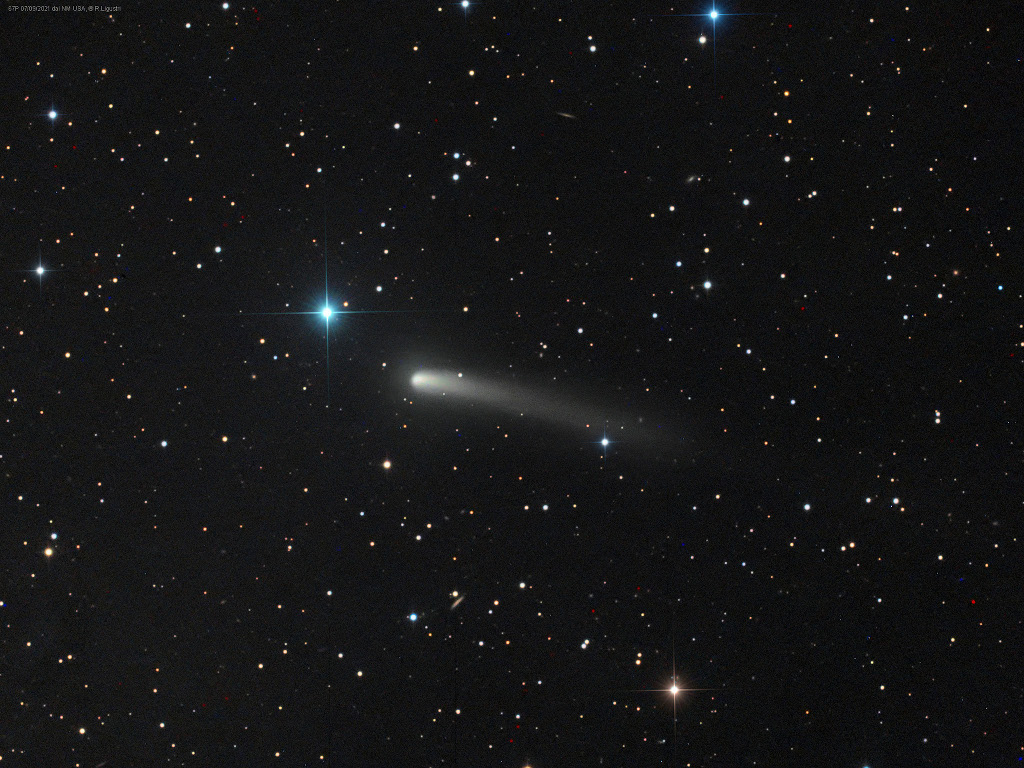Blog
Performing at St Paul United Methodist Church at 1130am in Mendota Heights with Ike on bass/lead vocals, Marcus on guitar and mick on boom boom.


Aurora! Captured in 2015, this aurora was noted by Icelanders for its great brightness and quick development. The aurora resulted from a solar storm, with high energy particles bursting out from the Sun and through a crack in Earth’s protective magnetosphere a few days later. Although a spiral pattern can be discerned, creative humans might imagine the complex glow as an atmospheric apparition of any number of common icons. In the foreground of the featured image is the Ölfusá River while the lights illuminate a bridge in Selfoss City. Just beyond the low clouds is a nearly full Moon. The liveliness of the Sun — and likely the resulting auroras on Earth — is slowly increasing as the Sun emerges from a Solar minimum, a historically quiet period in its 11-year cycle.

more...
Maria Muldaur (born September 12, 1943) is an American folk and blues singer who was part of the American folk music revival in the early 1960s. She recorded the 1973 hit song “Midnight at the Oasis” and continues to record albums in the folk, blues, early jazz, gospel, country, and R&Btraditions. She was the wife of musician Geoff Muldaur and is the mother of singer-songwriter Jenni Muldaur.
Muldaur was born Maria Grazia Rosa Domenica D’Amato in Greenwich Village, New York City, where she attended Hunter College High School. Muldaur cites as early musical influences: classic country music by Kitty Wells, Hank Williams, Hank Snow, Hank Thompson, Ernest Tubb, Bob Wills and the Texas Playboys; early rhythm and blues artists like Chuck Willis, Little Richard, Ruth Brown, Fats Domino, Muddy Waters; Alan Freed “rock ‘n’ roll” shows; doo-wop groups such as The Platters, The Five Satins.
more...“Papa” John DeFrancesco (born September 12, 1940) is an American jazz organist and vocalist, and father of Joey DeFrancesco and Johnny DeFrancesco.
more...Bill Jennings (September 12, 1919 – November 29, 1978) was an American jazz guitarist and composer.
Recording as both a leader and a sideman, Jennings has been called “the architect of soul jazz” and has influenced on jazz, soul, R&B, and blues guitar. B.B. King often mentioned Jennings as one of biggest influences. Jennings recorded with such artists as Willis “Gator” Jackson, Brother Jack McDuff, Leo Parker, Bill Doggett, Louis Jordan, King Curtis, Louis Armstrong, and Ella Fitzgerald and unique in his ability to play in many styles, including swing, bop, jump blues, R&B, and pop. Jennings played on “Fever” by Little Willie John, which made the Billboard R&B chart in the US and peaked at number 24 on the Billboard Hot 100.
https://www.youtube.com/watch?v=tFpsr3VEr84
more...William Alonzo “Cat” Anderson (September 12, 1916 – April 29, 1981) was an American jazz trumpeter known for his long period as a member of Duke Ellington‘s orchestra and for his wide range, especially his ability to play in the altissimo register.
Born in Greenville, South Carolina, Anderson lost both parents when he was four years old, and was sent to live at the Jenkins Orphanage in Charleston, where he learned to play trumpet. Classmates gave him the nickname “Cat” (which he used all his life) based on his fighting style. He toured and made his first recording with the Carolina Cotton Pickers, a small group based at the orphanage. After leaving the Cotton Pickers, Anderson played with guitarist Hartley Toots, Claude Hopkins‘ big band, Doc Wheeler’s Sunset Orchestra (1938–1942), with whom he also recorded, Lucky Millinder, the Erskine Hawkins Orchestra, Sabby Lewis‘s Orchestra, and Lionel Hampton, with whom he recorded the classic “Flying Home No. 2.
more...These three bright nebulae are often featured on telescopic tours of the constellation Sagittarius and the crowded starfields of the central Milky Way. In fact, 18th century cosmic tourist Charles Messier cataloged two of them; M8, the large nebula below and right of center, and colorful M20 near the top of the frame. The third emission region includes NGC 6559, left of M8 and separated from the larger nebula by a dark dust lane. All three are stellar nurseries about five thousand light-years or so distant. Over a hundred light-years across the expansive M8 is also known as the Lagoon Nebula. M20’s popular moniker is the Trifid. Glowing hydrogen gas creates the dominant red color of the emission nebulae. But for striking contrast, blue hues in the Trifid are due to dust reflected starlight. The broad interstellarscape spans almost 4 degrees or 8 full moons on the sky.

Leo Kottke (born September 11, 1945) is an acoustic guitarist. He is known for a fingerpicking style that draws on blues, jazz, and folk music, and for syncopated, polyphonic melodies. He overcame a series of personal obstacles, including partial loss of hearing and a nearly career-ending bout with tendon damage in his right hand, to emerge as a widely recognized master of his instrument. He resides in the Minneapolis area with his family.
Focusing primarily on instrumental composition and playing, Kottke also sings sporadically, in an unconventional yet expressive baritone described by himself as sounding like “geese farts on a muggy day”. In concert, Kottke intersperses humorous and often bizarre monologues with vocal and instrumental selections from throughout his career, played solo on six and twelve string guitars.
Born in Athens, Georgia, Kottke moved with his parents so frequently that he was raised in twelve different states. As a youth living in Muskogee, Oklahoma, he was influenced by folk and delta blues music, notably that of Mississippi John Hurt. Kottke learned to play trombone and violin before trying the guitar and developing his own unconventional picking style.
more...Mickey Hart (born Michael Steven Hartman, September 11, 1943) is an American percussionist and musicologist. He is best known as one of the two drummers of the rock band Grateful Dead. He was a member of the Grateful Dead from September 1967 until February 1971, and again from October 1974 until their final show in July 1995. He and fellow Dead drummer Bill Kreutzmann earned the nickname “the rhythm devils”.
Michael Steven Hartman was born in Flatbush neighborhood of Brooklyn, New York. He was raised in suburban Inwood, New York by his mother, Leah, a drummer, gown maker and bookkeeper. His father Lenny Hart, a champion rudimental drummer, had abandoned his family when the younger Hart was a toddler. Although Hart (who was hyperactive and not academically inclined) became interested in percussion as a grade school student, his interest intensified after seeing his father’s picture in a newsreel documenting the 1939 World’s Fair. Shortly thereafter, he discovered a practice pad and a pair of snakewood sticks that belonged to his father. “From the age of ten,” he recalled, “all I did was drum.”
more...Victor Lemonte Wooten is an American bassist, songwriter, and record producer. He has been the bassist for Béla Fleck and the Flecktones since the group’s formation in 1988 and a member of the band SMV with two other bassists, Stanley Clarke and Marcus Miller. From 2017 to 2019 he recorded as the bassist for the metal band Nitro.
He owns Vix Records, which releases his albums. He wrote the novel The Music Lesson: A Spiritual Search for Growth Through Music. He later released the book’s sequel, The Spirit of Music: The Lesson Continues, on February second, 2021.
Wooten is the recipient of five Grammy Awards. He won the Bass Player of the Year award from Bass Player magazine three times and is the first person to win the award more than once. In 2011, he was ranked No. 10 in the Top 10 Bassists of All Time by Rolling Stone magazine.
Born to Dorothy and Elijah Wooten, Victor is the youngest of the five Wooten brothers; Regi, Roy, Rudy, and Joseph Wooten are all musicians. Regi began to teach Victor to play bass when he was two, and by the age of six, he was performing with his brothers in their family band, The Wooten Brothers Band. As a United States Air Force family, they moved often when Wooten was young. The family settled in Newport News, Virginia in 1972. Wooten graduated from Denbigh High School in 1982. While in high school, he and his brothers played in the country music venue at Busch Gardens theme park in Williamsburg, Virginia. In 1987, he traveled to Nashville, Tennessee, to visit friends that he made at the theme park. One of them was a studio engineer who introduced him to Béla Fleck, with whom he has often collaborated.
more...Hiram Law Bullock (September 11, 1955 – July 25, 2008) was an American jazz funk and jazz fusion guitarist.
Bullock was born in Osaka, Japan to African American parents serving in the U.S. military. At the age of two he returned to Baltimore, Maryland with his parents and showed musical talent. He studied piano at the city’s Peabody Conservatory of Music, giving his first public performance at the age of six. After playing saxophone and bass guitar, he took up the electric guitar at age sixteen.
Bullock attended McDonogh School for Boys in Reisterstown, Maryland. He was captain of the band in middle school. He studied at the University of Miami, where he met guitarists Pat Metheny and Steve Morse, and bass players Jaco Pastorius and Will Lee. He paid for tuition by performing at nightclubs in Florida before moving to New York. He became best known for playing with Lee on Late Night with David Letterman and working with David Sanborn and Bob James. His work can be heard on Bob James’ Angela which is also the theme song for the TV show Taxi, Steely Dan‘s Gaucho (1980), Paul Simon‘s One Trick Pony (1980), Sting‘s …Nothing Like the Sun (1987) and Billy Joel‘s The Stranger (1977). He also worked with Harry Belafonte, Marcus Miller, Carla Bley, Miles Davis, Ruben Rada, and Gil Evans.
more...Oliver Theophilus Jones, OC CQ (born September 11, 1934 in Little Burgundy, Montreal, Quebec) is a Canadian jazz pianist, organist, composer and arranger.
Born to Barbadian parents, Oliver Jones began his career as a pianist at the age of five, studying with Mme Bonner in Little Burgundy’s Union United Church, made famous by Trevor W. Payne‘s Montreal Jubilation Gospel Choir. He continued to develop his talent through his studies with Oscar Peterson‘s sister Daisy Peterson Sweeney starting at eight years old. In addition to performing at Union United Church when he was a child, he also performed a solo novelty act at the Cafe St. Michel as well as other clubs and theaters in the Montreal area. “I had a trick piano act, dancing, doing the splits, playing from underneath the piano, or with a sheet over the keys.”
He started his early touring in Vermont and Quebec with a band called Bandwagon, and in 1953–63 played mainly in the Montreal area, with tours in Quebec.
From 1964 to 1980 Jones was music director for the Jamaican calypso singer Kenny Hamilton, based out of Puerto Rico.
In late 1980 he teamed up with Montreal’s Charlie Biddle, working in and around local clubs and hotel lounges in Montreal. Jones was resident pianist at Charlie Biddle’s jazz club Biddles from 1981 to 1986. His first album, Live at Biddles recorded in 1983, was the first record on the Justin Time record label.
more...Roosevelt “Baby Face” Willette (September 11, 1933 – April 1, 1971) was an American hard bop and soul-jazz musician who played the Hammond organ.
He was born Roosevelt James Willett (no “e”), in Little Rock, Arkansas, in 1933 according to researchers Bob Eagle and Eric LeBlanc, though other sources state 1934 or 1937. According to the liner notes on his first Blue Note album, Grant’s First Stand, Willette was born in New Orleans.
His mother was a missionary who played the piano in the church where his father was a minister. As a result, his musical roots were in gospel. Willette became involved in music by playing the piano for various gospel groups, and accompanied his sisters Dorothy and Georgia, who toured and recorded as the Willett Sisters. He spent his early career travelling across the United States, Canada and Cuba, as pianist with the bands of King Kolax, Joe Houston, Johnny Otis and Big Jay McNeely, among others.
He made his first recording as Baby Face Willette (“Wake Up, Get Out” b/w “Cool Blues”) in Los Angeles in 1952, but soon moved to Chicago and married. He recorded tracks including “Can’t Keep From Lovin’ You” and “Why” for Vee-Jay Records that year, but they were not released until late 1955. He played in both rhythm and blues and jazz bands, playing piano before switching to organ around 1958. His organ playing was inspired by Jimmy Smith‘s work, though Willette’s style is more heavily influenced by gospel, blues and soul jazz than Smith’s. Willette was also a professional hairdresser. Before his time in New York City, he was based out of Milwaukee, playing with his vocalist wife Jo Gibson at clubs such as The Flame Club, The Pelican Club, The Moonglow and Max’s among others.
more...Faint comet Churyumov-Gerasimenko (67P) sweeps past background stars in the constellation Taurus and even fainter distant galaxies in this telescopic frame from September 7. About 5 years ago, this comet’s 4 kilometer spanning, double-lobed nucleus became the final resting place of robots from planet Earth, following the completion of the historic Rosetta mission to the comet. After wandering out beyond the orbit of Jupiter, Churyumov-Gerasimenko is now returning along its 6.4 year periodic orbit toward its next perihelion or closest approach to the Sun, on November 2. On November 12, the comet’s perigee, its closest approach to Earth, will bring it within about 0.42 astronomical units. Telescopes should still be required to view it even at its brightest, predicted to be in late November and December. On September 7 Rosetta’s comet was about 0.65 astronomical units away or about 5.4 light-minutes from our fair planet.

Roy Ayers (born September 10, 1940 LA,CA) is an American funk, soul, and jazz composer, vibraphone player, and music producer. Ayers began his career as a post-bop jazz artist, releasing several albums with Atlantic Records, before his tenure at Polydor Records beginning in the 1970s, during which he helped pioneer jazz-funk. He is a key figure in the acid jazz movement, and has been dubbed “The Godfather of Neo Soul”. He is best known for his compositions “Everybody Loves the Sunshine”, “Searchin”, and “Running Away”. At one time, he was said to have more sampled hits by rappers than any other artist.
more...More Posts
- World Music Cumar Dhuule
- Daily Roots Dennis Brown
- Alien Spaceships Circling Earth
- Challenge to Change
- Cosmo NGC 4945
- Jorge López Ruiz
- Alberta Hunter
- Gilbert Scott-Heron
- Duke Jordan
- World Music Faysal Cumar Mushteeg Ahun
- Daily Roots Tommy McCook Supersonics
- Ahmed Yusuf & Somali Blues Performance 4-6-2025
- Don’t Lose Your Head
- Protect Our Children
- Introspection
- Canadian Solidarity
- Cosmo NGC 4941
- Joseph Haydn
- Johann Sebastian Bach
- Herb Alpert
